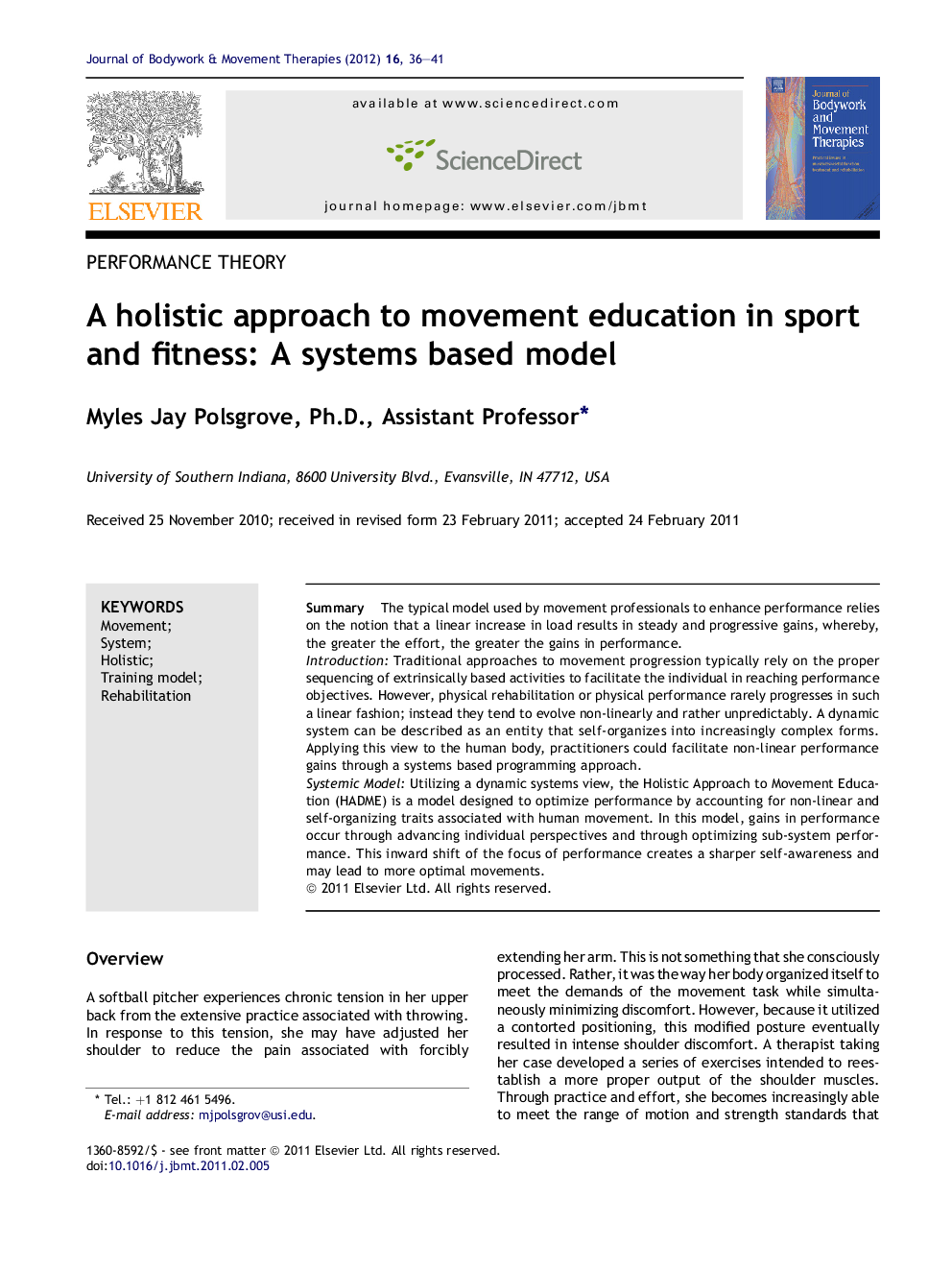| Article ID | Journal | Published Year | Pages | File Type |
|---|---|---|---|---|
| 2619681 | Journal of Bodywork and Movement Therapies | 2012 | 6 Pages |
SummaryThe typical model used by movement professionals to enhance performance relies on the notion that a linear increase in load results in steady and progressive gains, whereby, the greater the effort, the greater the gains in performance.IntroductionTraditional approaches to movement progression typically rely on the proper sequencing of extrinsically based activities to facilitate the individual in reaching performance objectives. However, physical rehabilitation or physical performance rarely progresses in such a linear fashion; instead they tend to evolve non-linearly and rather unpredictably. A dynamic system can be described as an entity that self-organizes into increasingly complex forms. Applying this view to the human body, practitioners could facilitate non-linear performance gains through a systems based programming approach.Systemic ModelUtilizing a dynamic systems view, the Holistic Approach to Movement Education (HADME) is a model designed to optimize performance by accounting for non-linear and self-organizing traits associated with human movement. In this model, gains in performance occur through advancing individual perspectives and through optimizing sub-system performance. This inward shift of the focus of performance creates a sharper self-awareness and may lead to more optimal movements.
